WANTED: all records of Butterflies and Moths found in the county of Huntingdonshire. A book is being written about the Butterflies and Moths of Huntingdonshire, which it is planned to be published in 2020.
BUTTERFLIES:
There are many gaps on the distribution maps of some of our common butterflies; species that should be recorded in all areas. I have visited most areas myself but cannot cover every area in the county at the right time, that is, when each butterfly species is on the wing, to record them all, so I am asking for your help. I require records of every species, lists from your garden are just as important as others, so please make a list of any butterflies that visit your garden and send them to me. Also, when you are out and about in Huntingdonshire and see a butterfly make a note of the species, where seen and the date. If you can give me a four-figure grid reference or post code, if available, that would be appreciated, so I can make sure the record is placed in the right area. As an example, sites like Brampton Wood and Monks Wood cover four recording squares (tetrads), so to plot the position of a record on a map I need the area of the wood the record was made: i.e. four figure grid reference. However, don’t let this put you off sending in records because I can usually sort out where the record has been made with a little help from you.
KNOWN DISTRIBUTION OF ORANGE-TIP BUTTERFLY:
The map below shows the distribution of the Orange-Tip butterfly, a very easy species to record. The red dots are the most recent records. As can be seen from the blank areas on the map there are many sites where this species has never been recorded.
Please send any records to This email address is being protected from spambots. You need JavaScript enabled to view it.
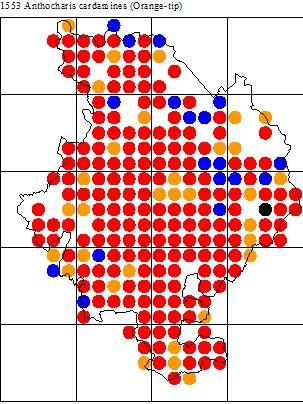 |
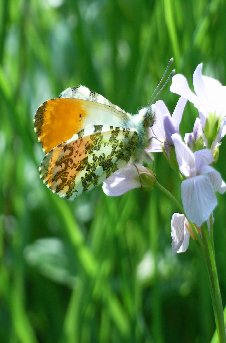 |
KNOWN DISTRIBUTION OF HOLLY BLUE BUTTERFLY:
Map showing the distribution of the Holly Blue. A species that is a regular visitor to gardens in May and August.
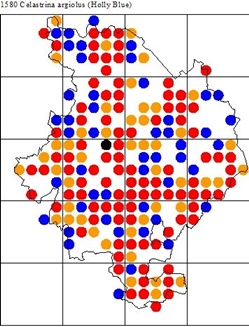 |
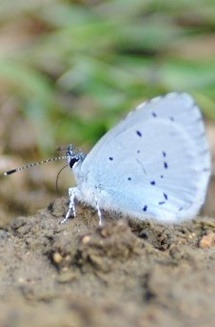 |
MOTHS:
Recording the moths is more specialised than recording the butterflies, but everyone can still help with some species. There are several species that are often found in houses, such as the Brown House-moth and White-shouldered House-moth. Most people squash them when they see them. What I am asking is that you place them in a pot and put them in your freezer for a couple of hours. This will kill them, but keep them in good condition for me to identify. You can then either photograph them and e-mail me the picture or save them and hand them to me at a later date – perhaps at a HFFS meeting. If you intend to store them to hand to me later keep them dry, so they don’t get attacked by mould and also be aware of other insects that may eat them like museum beetle larvae. I require the same details as with the butterflies, where found and the date, so they can be plotted on the maps. I also want any other records of moths you are able to identify or are willing to collect or photograph and e-mail to me for identification, that you may see in your garden or while out and about. Silver Ys are very common some years, but like some species of butterflies are not recorded from many areas.
KNOWN DISTRIBUTION OF BROWN HOUSE MOTH:
The map below shows the known distribution of the Brown House-moth, a moth that most probably occurs in every house in the county. The red dots are the most recent records, so from this map you can see how under-recorded this species is.
 |
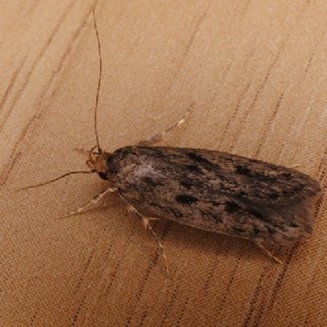 |
KNOWN DISTRIBUTION OF SILVER Y:
The map below shows the known distribution of the Silver Y, a very common migrant moth that is also greatly under-recorded.
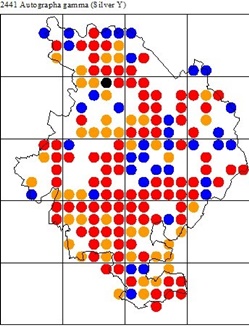 |
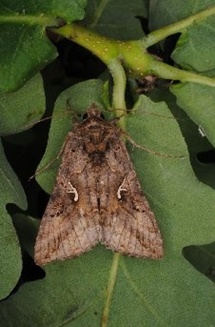 |



